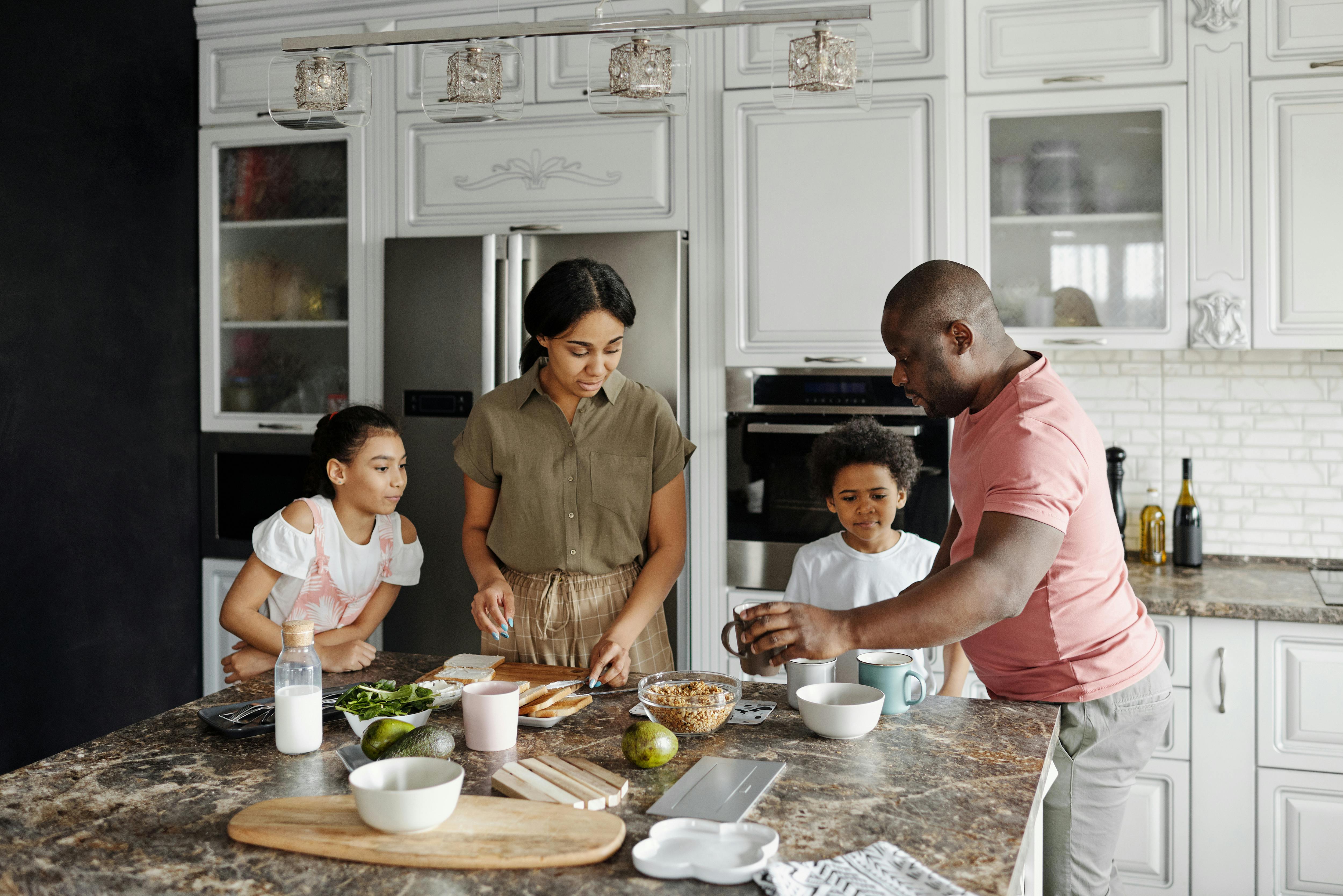Countertops and worktops for kitchens – Materials buying guide
The hob or hob is not only necessary for a kitchen, it is also an integral part of its design. Food preparation can put a lot of wear and tear on kitchen surfaces. In this article, we take a look at the various materials used for countertops and discuss the reasons for choosing them for your kitchen. Whether it’s its durability, hygiene, or cost, you can find the advantages and disadvantages of each material below.
Laminate Countertops
This pricey option is a very popular choice for kitchen countertops and comes in a variety of colors and textures. It is not as resistant and can be scratched or burned, and it gets dirty very easily. It is not made to last. If you choose laminate, you can protect your surfaces with trivets and cutting boards.
Advantages
Quite cheap.
A wide range of colors and patterns to choose from.
Easy to apply elegant edges.
Stain resistant.
Disadvantages
It is not advisable to use it as a cutting surface or to place hot pans.
It cannot be repaired if it is damaged. It must be replaced.
Noticeable stitching due to a dark backing sheet. This is more evident with light colors.
granite countertops
Granite is the most common type of stone used for a countertop. Granite is quarried all over the world, with colors and patterns that reveal the region and the geological conditions that created it. Each slab is unique, with random and inconsistent patterns for great character and appearance. It is very resistant, does not scratch or burn and maintains its color. Unfortunately, granite is a very expensive material, although the final look is often worth it.
Advantages
A variety of colors of natural stone.
Extremely durable.
Heat resistant and hard to scratch.
Disadvantages
Expensive
To prevent staining, it will need to be resealed.
stainless steel countertops
Often associated with professional kitchens, stainless steel is sleek and contemporary. Steel is highly durable and can be shaped in many ways to fit your kitchen. The backsplash and sink can be made from the same piece of steel, ensuring there are no awkward corners or gaps where food can get lost. Stainless steel is hygienic and is the only surface that can be safely bleached.
Advantages
The only surface that can be safely bleached.
Corrosion proof.
very durable
Sinks, drain boards, and backsplashes can all be made into the countertop.
heat-resistant
All joints can be polished to a uniform effect (may be at additional cost).
Disadvantages
It can scratch and dent (although newer designs may include textured finishes that can hide scratches).
It has a high maintenance option.
Expensive.
Wood and Butcher Block Countertops
Wood will always look great and add character to your kitchen. On the countertop, however, it is very susceptible to scratches and cuts. Hot pans will burn or scar it, and it can be unsanitary if meat or poultry is cooked on it. However, it is one of the only surfaces that will not damage your knives. Oak, maple, cherry, red beech, walnut, teak, and mahogany are all preferred hardwoods for countertop applications.
Advantages
Ideal for cutting.
The only surface that will not damage your knives.
Very attractive.
Disadvantages
Deep cuts will show, but can be sanded down.
Hot pans will burn it or leave marks.
High maintenance. Use mineral oil to renew the surface.
Quartz Surfaces: Zodiaq, Cambria and Silestone Countertops
Quartz gives a great natural look to any kitchen. It is very durable being resistant to scratches, stains and heat. However, this flexibility comes at a price and you can sometimes find prices up to 10% higher than granite. Quartz surfaces are hygienic because the material is non-porous and therefore bacteria and mold have nowhere to hide. Three brands to look out for are Zodiaq, Cambria, and Silestone. Zodiaq comes in 26 colors and is guaranteed for 10 years. Cambria is made in the USA and is available in 34 colors, all at the same price. Silestone is manufactured by the Spanish company Consentino and is available in 46 colours.
Advantages
Scratch resistant.
Stain resistant.
Heat-resistant.
Looks great.
No need to reseal every few years (unlike granite).
Disadvantages
Expensive (about 10% more than granite).
Dashboards only.
Corian, Avonite and other solid surface countertops
A countertop that consists of a solid plastic throughout its entire length is said to be a solid surface countertop (as opposed to ones built in layers, i.e. laminate). They are similar to quartz in that they are also resistant. They are resistant to scratches, scorching and heat. If you manage to damage the countertop, you can easily repair it. You can expect to spend about three times as much as you would for laminate and twice as much for wood. There is a wide range of colors and styles available to choose from and most suppliers will give you a good guarantee.
Corian is the most famous brand (it’s been around for 30 years) Avonite has unique color options.
Advantages
Wide variety of colors and border styles.
You can create your own design on the cover.
Backsplashes can be any height and cover all the way to the deck for a very clean look.
The seams are practically invisible.
The material is renewable and repairable.
Most brands offer a full, transferable 10-year warranty.
Disadvantages
The cost is high when all available options are used.
